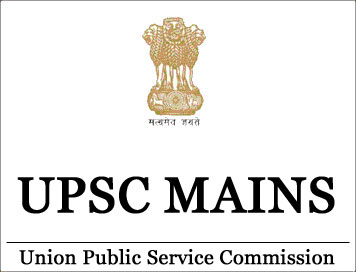(HOT) UPSC Current Affairs 2025 PDF
NEW! The Gist (NOV-2025) | E-BOOKS
(Exam Paper) UPSC IAS Mains 2005: Geography

(Exam Paper) UPSC IAS Mains 2005: Geography
Paper- I
SECTION A
1. On the outline map of the World supplied to you, mark any ten of the
following and also write in your answer script the most significant aspect of
each of them in not more than 10 words:
(a) Taipei
(b) Bern
(c) Lake Balaton
(d) Port Louis
(e) Great Barrier Reef
(f) Leeds
(g) Broken Hill
(h) Nova Scotia
(i) Madrid
(j) Moluccas
(k) Graz
(l) Mosul
2. “Structure is a dominant control factor in the evolution of landforms. Discuss with suitable examples. 60
3. Discuss the main features of the climatic classification system evolved by Koppen. Also point out its anomalies. 60
4. Bring out the major problems of environmental pollution at global scale and suggest measures to check it. 60
SECTION B
5. Write short notes on any three of the following in about 200 words each :
(a) Role of seismic waves in the study of earth’s interior
(b) Soil erosion and conservation
(c) Areal differentiation
(d) Concept of primate city
6. Examine the Heart-land theory, and assess its merits and demerits. 60
7. Discuss Weber’s theory of industrial location, and assess its relevance in the present-day context. 60
8. What is a region ? Discuss the methods of regionalisation. 60
Paper- II
SECTION A
1. Mark on the outline map of India supplied any ten of the following
entries. Write brief notes (not exceeding 30 words) on the significant aspects
of the same ten entries.
(i) Jawahar Lal Nehru Port
(ii) Chandra Bhaga River
(iii) Kaimur Range
(iv) Dalhousie
(v) Ganga Sagar
(vi) Indira Point
(vii) Cardamom Hills
(viii) Bombay High
(ix) Nag Pahar
(x) Gersoppa Falls
(xi) Pulicat Lake
(xii) Kakinada
2. “Non-conventional energy is the energy of the future in India.” Justify this statement. 60
3. Present an account of the success and constraints of White Revolution in India. 60
4. What is the Golden Quadrilateral ? Discuss the progress made in its execution and impacts on Indian economy. 60
SECTION B
5. Answer any three of the following in about 200 words each:
(a) Identify the tribal areas of India and highlight their important problems.
(b) Discuss briefly the principal types of rural settlements in India.
(c) Elucidate the concept of sustainable growth and development.
(d) Discuss Panchayati Raj as a measure of decentralised planning in India.
6. Give an account of the distribution of flood-prone areas of India and the programmes and policy of controlling the impact of floods in the country. 60
7. Examine the relationship between geography and regional planning. 60
8. Discuss the experience of regional planning in India in the context of the National Capital Region. 60


